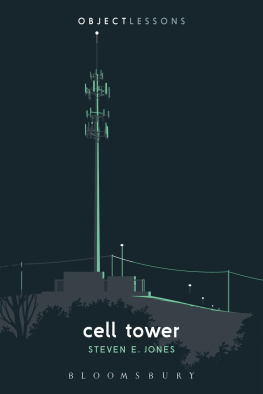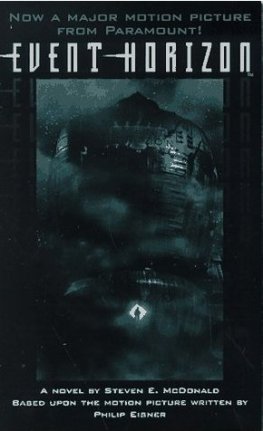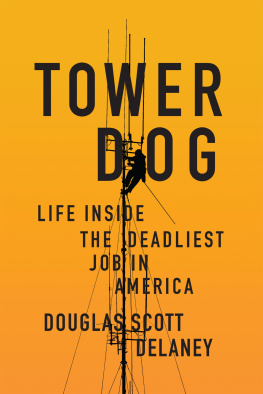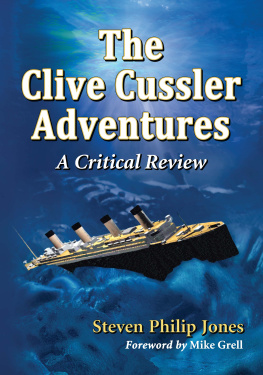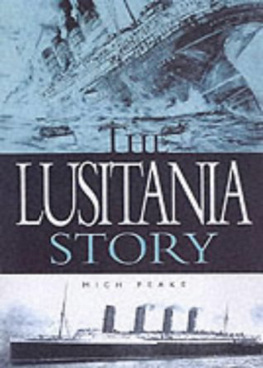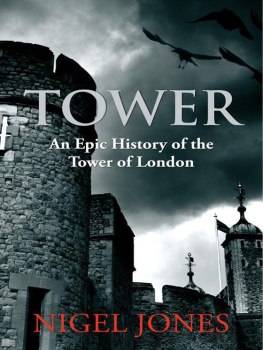Steven E. Jones - Cell Tower
Here you can read online Steven E. Jones - Cell Tower full text of the book (entire story) in english for free. Download pdf and epub, get meaning, cover and reviews about this ebook. year: 2020, publisher: Bloomsbury USA, genre: Art. Description of the work, (preface) as well as reviews are available. Best literature library LitArk.com created for fans of good reading and offers a wide selection of genres:
Romance novel
Science fiction
Adventure
Detective
Science
History
Home and family
Prose
Art
Politics
Computer
Non-fiction
Religion
Business
Children
Humor
Choose a favorite category and find really read worthwhile books. Enjoy immersion in the world of imagination, feel the emotions of the characters or learn something new for yourself, make an fascinating discovery.
- Book:Cell Tower
- Author:
- Publisher:Bloomsbury USA
- Genre:
- Year:2020
- Rating:3 / 5
- Favourites:Add to favourites
- Your mark:
- 60
- 1
- 2
- 3
- 4
- 5
Cell Tower: summary, description and annotation
We offer to read an annotation, description, summary or preface (depends on what the author of the book "Cell Tower" wrote himself). If you haven't found the necessary information about the book — write in the comments, we will try to find it.
Cell Tower — read online for free the complete book (whole text) full work
Below is the text of the book, divided by pages. System saving the place of the last page read, allows you to conveniently read the book "Cell Tower" online for free, without having to search again every time where you left off. Put a bookmark, and you can go to the page where you finished reading at any time.
Font size:
Interval:
Bookmark:

The Object Lessons series achieves something very close to magic: the books take ordinaryeven banalobjects and animate them with a rich history of invention, political struggle, science, and popular mythology. Filled with fascinating details and conveyed in sharp, accessible prose, the books make the everyday world come to life. Be warned: once youve read a few of these, youll start walking around your house, picking up random objects, and musing aloud: I wonder what the story is behind this thing?
Steven Johnson, author of Where Good Ideas Come From and How We Got to Now
Object Lessons describe themselves as short, beautiful books, and to that, Ill say, amen.... If you read enough Object Lessons books, youll fill your head with plenty of trivia to amaze and annoy your friends and loved onescaution recommended on pontificating on the objects surrounding you. More importantly, though... they inspire us to take a second look at parts of the everyday that weve taken for granted. These are not so much lessons about the objects themselves, but opportunities for self-reflection and storytelling. They remind us that we are surrounded by a wondrous world, as long as we care to look.
John Warner, The Chicago Tribune
For my money, Object Lessons is the most consistently interesting nonfiction book series in America.
Megan Volpert, PopMatters
Besides being beautiful little hand-sized objects themselves, showcasing exceptional writing, the wonder of these books is that they exist at all... Uniformly excellent, engaging, thought-provoking, and informative.
Jennifer Bort Yacovissi, Washington Independent Review of Books
... edifying and entertaining... perfect for slipping in a pocket and pulling out when life is on hold.
Sarah Murdoch, Toronto Star
[W]itty, thought-provoking, and poetic... These little books are a page-flippers dream.
John Timpane, The Philadelphia Inquirer
Though short, at roughly 25,000 words apiece, these books are anything but slight.
Marina Benjamin, New Statesman
The joy of the series, of reading Remote Control , Golf Ball , Drivers License , Drone , Silence , Glass , Refrigerator , Hotel , and Waste ... in quick succession, lies in encountering the various turns through which each of their authors has been put by his or her object.... The object predominates, sits squarely center stage, directs the action. The object decides the genre, the chronology, and the limits of the study. Accordingly, the author has to take her cue from the thing she chose or that chose her. The result is a wonderfully uneven series of books, each one a thing unto itself.
Julian Yates, Los Angeles Review of Books
The Object Lessons series has a beautifully simple premise. Each book or essay centers on a specific object. This can be mundane or unexpected, humorous or politically timely. Whatever the subject, these descriptions reveal the rich worlds hidden under the surface of things.
Christine Ro, Book Riot
... a sensibility somewhere between Roland Barthes and Wes Anderson.
Simon Reynolds, author of Retromania: Pop Cultures Addiction to Its Own Past
OBJECT LESSONS
A book series about the hidden lives of ordinary things.
Series Editors:
Ian Bogost and Christopher Schaberg
Advisory Board:
Sara Ahmed, Jane Bennett, Jeffrey Jerome Cohen, Johanna Drucker, Raiford Guins, Graham Harman, rene hoogland, Pam Houston, Eileen Joy, Douglas Kahn, Daniel Miller, Esther Milne, Timothy Morton, Kathleen Stewart, Nigel Thrift, Rob Walker, Michele White.
In association with

BOOKS IN THE SERIES
Remote Control by Caetlin Benson-Allott
Golf Ball by Harry Brown
Drivers License by Meredith Castile
Drone by Adam Rothstein
Silence by John Biguenet
Glass by John Garrison
Phone Booth by Ariana Kelly
Refrigerator by Jonathan Rees
Waste by Brian Thill
Hotel by Joanna Walsh
Hood by Alison Kinney
Dust by Michael Marder
Shipping Container by Craig Martin
Cigarette Lighter by Jack Pendarvis
Bookshelf by Lydia Pyne
Password by Martin Paul Eve
Questionnaire by Evan Kindley
Hair by Scott Lowe
Bread by Scott Cutler Shershow
Tree by Matthew Battles
Earth by Jeffrey Jerome Cohen and Linda T. Elkins-Tanton
Traffic by Paul Josephson
Egg by Nicole Walker
Sock by Kim Adrian
Eye Chart by William Germano
Whale Song by Margret Grebowicz
Tumor by Anna Leahy
Jet Lag by Christopher J. Lee
Shopping Mall by Matthew Newton
Personal Stereo by Rebecca Tuhus-Dubrow
Veil by Rafia Zakaria
Burger by Carol J. Adams
Luggage by Susan Harlan
Souvenir by Rolf Potts
Rust by Jean-Michel Rabat
Doctor by Andrew Bomback
Fake by Kati Stevens
Blanket by Kara Thompson
High Heel by Summer Brennan
Pill by Robert Bennett
Potato by Rebecca Earle
Coffee by Dinah Lenney
Email by Randy Malamud
Hashtag by Elizabeth Losh
Magnet by Eva Barbarossa
Bird by Erik Anderson
Bulletproof Vest by Kenneth R. Rosen
Cell Tower by Steven E. Jones
Coffee by Dinah Lenney
Compact Disc by Robert Barry
Ocean by Steve Mentz
Pixel by Ian Epstein
Fat by Hanne Blank (forthcoming)
Fog by Stephen Sparks (forthcoming)
Gin by Shonna Milliken Humphrey (forthcoming)
Office by Sheila Liming (forthcoming)
Signature by Hunter Dukes (forthcoming)
Snake by Erica Wright (forthcoming)
Train by A. N. Devers (forthcoming)
Wheelchair by Christopher R Smit (forthcoming)
Bicycle by Jonathan Maskit (forthcoming)
cell tower
STEVEN E. JONES

Contents
This is not a book about the cellphone, that shiny, flat computer with a radio in it that you probably have with you right now. This is a book about what makes the cellphone mobile, about the large object that connects the phone to the networkthe cell tower. Communication towers of one kind or another have been around for centuries, tall platforms from which to signal using flags, lanterns, bells, or voices. But the cell tower (in the UK its called a mobile mast or a telephone mast) is a descendant of early modern towers, and it inherited some of modernisms ambitions in its steel bones.
Nikola Teslas Wardenclyffe Tower is a good example of those modernist ambitions. It was 187 feet tall, built on New Yorks Long Island in 1901 and demolished in 1917, and was meant to transmit both telegraph signals and electrical power wirelessly, using the Earth itself as the conductive medium. Or, take the Eiffel Tower in Paris (1889), which Walter Benjamin called a monument to the heroic age of technology. Youve probably seen the animated RKO Radio Pictures logo at the beginning of old movies, a giant latticework steel tower straddling the globe and beaming out radio waves and bolts of electricity. Broadcast or telecommunications towers like these went up everywhere during the twentieth century and into the twenty-first century, from Londons BT Tower, to Torontos CN Tower, to the red-and-white Tokyo Tower (which is also an emoji), to the Skytree, also in Tokyo, and many more around the world. Tapered towers and techno-spires like these show up in the cartoon skylines of The Jetsons , Futurama , and Disney Worlds Tomorrowland because they once signified The Future (which evidently will involve lots of radio transmissions).
Font size:
Interval:
Bookmark:
Similar books «Cell Tower»
Look at similar books to Cell Tower. We have selected literature similar in name and meaning in the hope of providing readers with more options to find new, interesting, not yet read works.
Discussion, reviews of the book Cell Tower and just readers' own opinions. Leave your comments, write what you think about the work, its meaning or the main characters. Specify what exactly you liked and what you didn't like, and why you think so.

